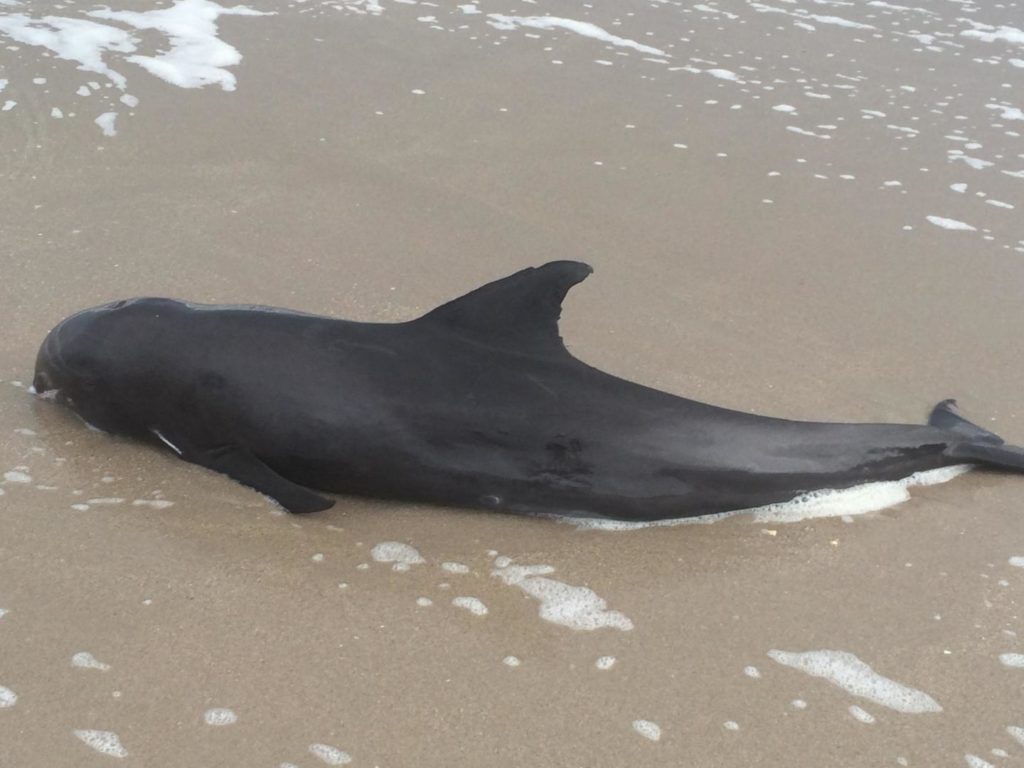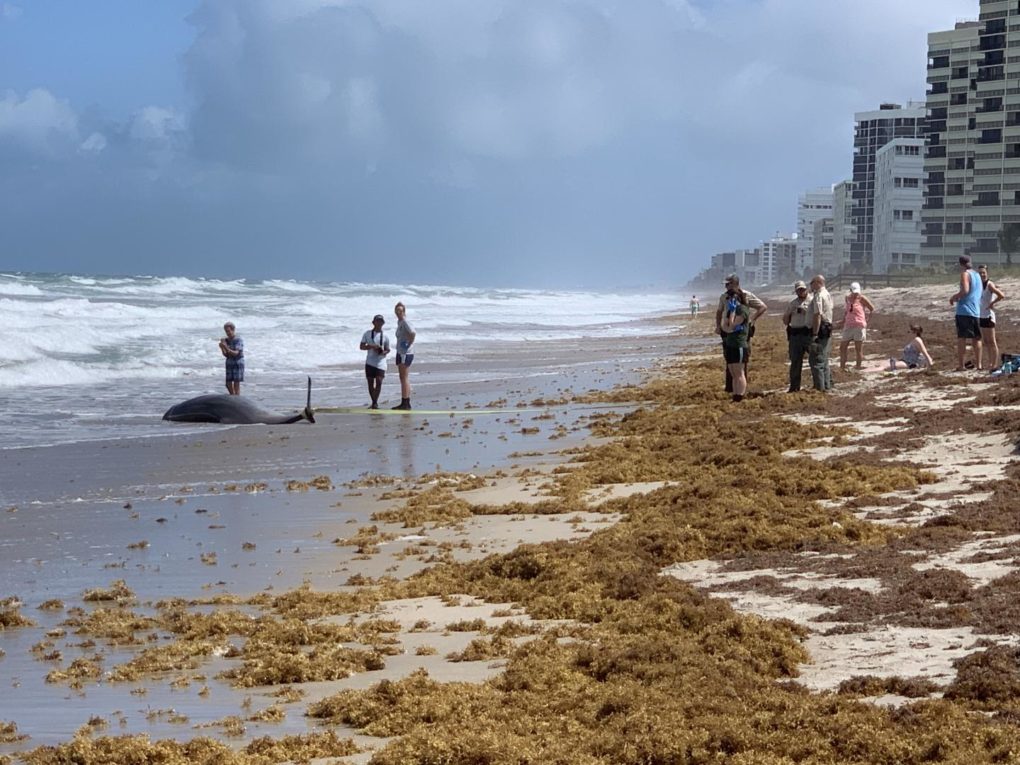Study Finds High Levels of Toxic Pollutants in Stranded Dolphins and Whales

Gervais’ beaked whale that stranded in St. Lucie County in Florida in 2019. CREDIT: Annie Page-Karjian
Researchers examine 83 stranded dolphins and whales in North Carolina and Florida
A study led by researchers at Florida Atlantic University’s Harbor Branch Oceanographic Institute examined toxins in tissue concentrations and pathology data from 83 stranded dolphins and whales along the southeastern coast of the United States from 2012 to 2018. Researchers examined 11 different animal species to test for 17 different substances in animals found on the shores in North Carolina and Florida.
This is the first study to date to publish a report examining concentrations in blubber tissues of stranded cetaceans of atrazine, an herbicide, DEP, (a phthalate ester found in plastics), NPE or nonylphenol ethoxylate commonly used in food packing, and triclosan, an antibacterial and antifungal agent present in some consumer products, including toothpaste, soaps, detergents and toys.
The study also is the first to report concentrations of toxicants in a white-beaked dolphin and in Gervais’ beaked whales, species for which the scientific literature remains sparse. Documenting toxicants in cetaceans is a critical step in tracing chemical contaminants within the marine food web and understanding their effects on biological systems.
Widget not in any sidebars
For the study, just published in the journal Frontiers in Marine Science, lead author Annie Page-Karjian, D.V.M., Ph.D., an assistant research professor and clinical veterinarian at FAU’s Harbor Branch, and collaborators, analyzed blubber samples for five organic toxicants including atrazine, DEP, NPE, bisphenol-A, diethyl phthalates and triclosan. They also analyzed liver samples for five non-essential elements (arsenic, cadmium, lead, mercury, thallium), six essential elements (cobalt, copper, manganese, iron, selenium, zinc) and one toxicant mixture class (Aroclor, a highly toxic industrial compound).
Results of the study showed that toxin and element concentrations varied based on animal demographic factors including species, sex, age and location. Liver samples from bottlenose dolphins had significantly higher average concentrations of lead, manganese, mercury, selenium, thallium, and zinc, and lower average concentrations of NPE, arsenic, cadmium, cobalt, and iron than samples from pygmy sperm whales. In adult female bottlenose dolphins, average arsenic concentrations were significantly higher and iron concentrations were significantly lower than in adult males. Adult bottlenose dolphins had significantly higher average concentrations of lead, mercury, and selenium, and significantly lower average manganese concentrations compared to juveniles.

Melon-headed whale that stranded in Sebastian in Florida in 2015. CREDIT: Wendy Marks
Geography also had an impact. Dolphins that stranded in Florida had significantly higher average concentrations of lead, mercury, and selenium, and lower concentrations of iron than dolphins that stranded in North Carolina.
Toxicants in the marine environment result from polluted runoff and chemicals in waterways from fossil fuels as well as single-use plastics commonly used by humans. These plastic objects include packaging film, detergents and some children’s toys and contain dangerous phthalates.
“We must do our part to reduce the amount of toxicants that enter into our marine environment, which have important health and environmental implications not just for marine life but for humans,” said Page-Karjian. “These chemicals work their way up through the food chain and get more concentrated the higher up they go. When dolphins and whales eat fish with concentrations of the chemicals, the toxic elements enter their bodies. Dolphins eat a variety of fish and shrimp in these marine environments and so do humans.”



